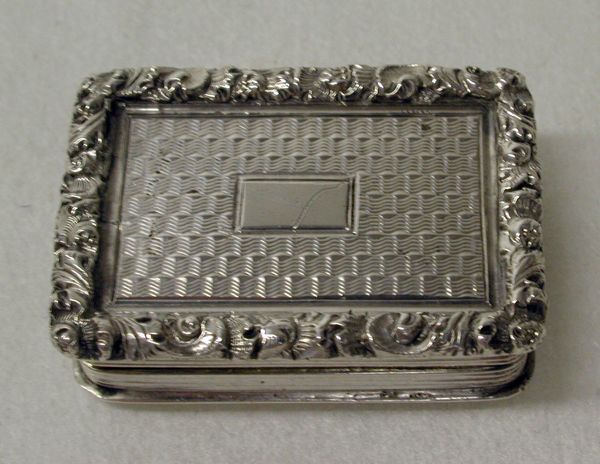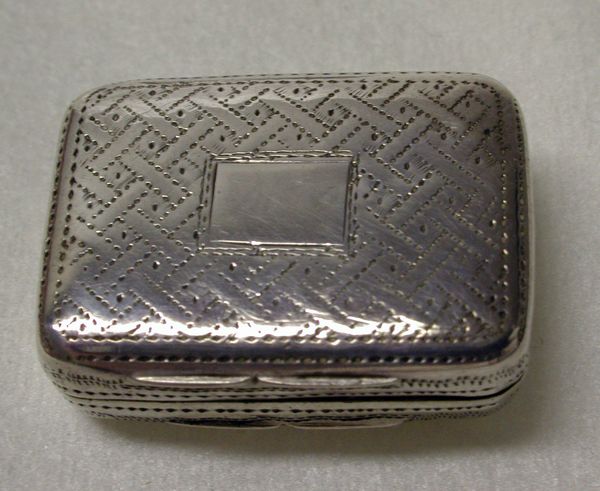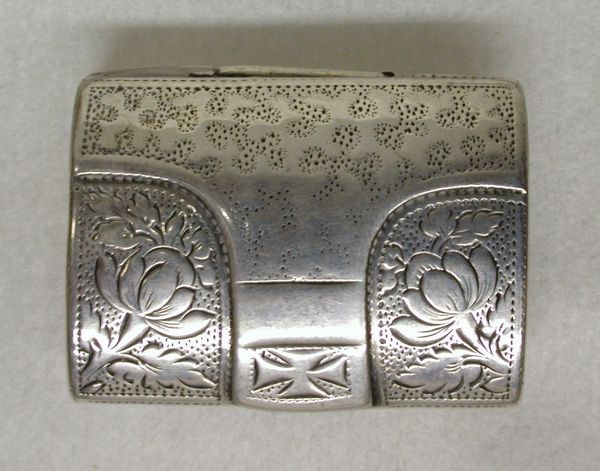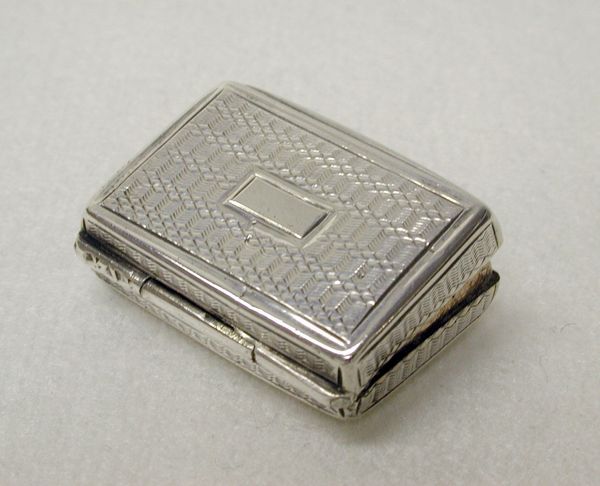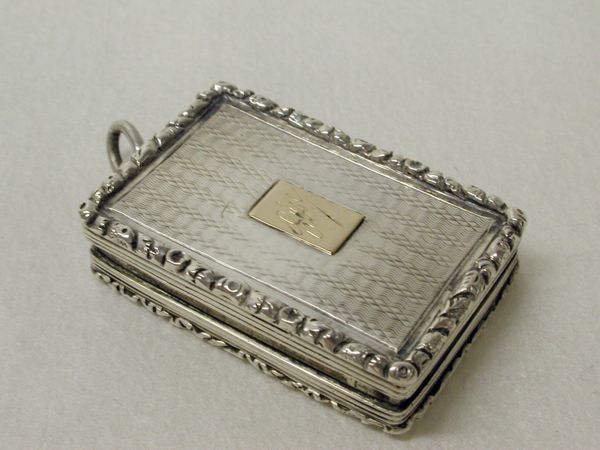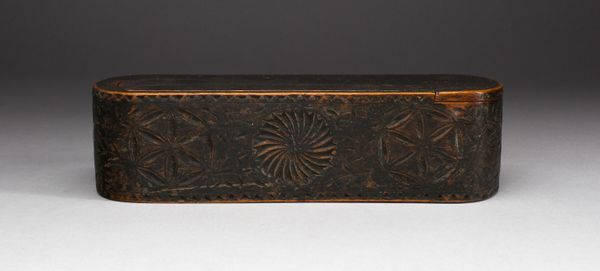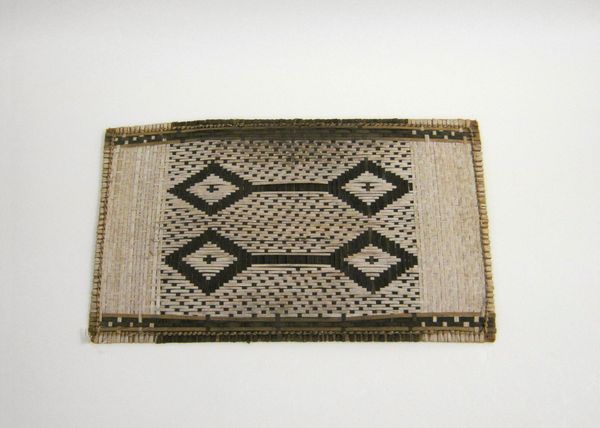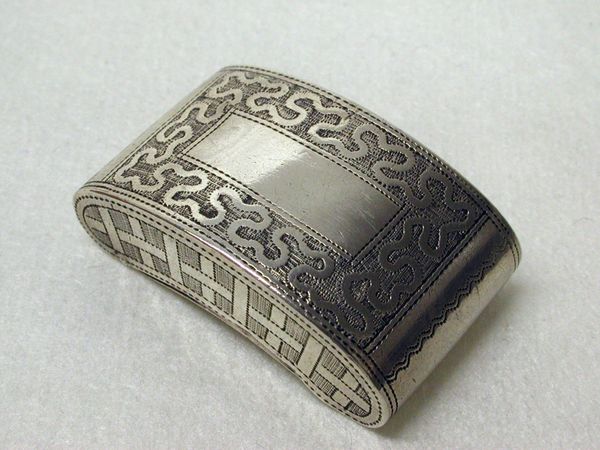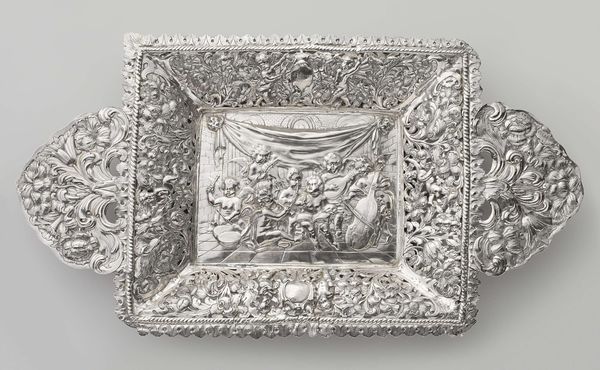
silver, metal, sculpture
#
silver
#
metal
#
sculpture
#
sculpture
#
decorative-art
Dimensions: Length: 1 1/2 in. (3.8 cm)
Copyright: Public Domain
Editor: Here we have a Vinaigrette box crafted in 1828 by Nathaniel Mills. It’s made of silver and lives at The Met. The surface is wonderfully ornate, and I'm struck by the incredible detail, especially considering its small size. How do you interpret the design elements and the object's purpose in reflecting the culture of its time? Curator: It’s fascinating how such a small object can hold so much meaning. Think about the function of a vinaigrette box – holding a sponge soaked in perfume or aromatic vinegar, meant to ward off unpleasant smells. It speaks volumes about the sensory experiences of the 19th century. Editor: So, the box itself becomes a kind of shield, a cultural response to something we might take for granted today? Curator: Precisely. The elaborate design, typical of decorative arts, suggests that even everyday items were imbued with a sense of beauty and status. And consider the choice of silver—its association with wealth and purity. It suggests that confronting the unpleasant aspects of life required a refined, almost ritualistic approach. Can you imagine carrying this with you, in a world much different from our own? Editor: It really makes you think about how differently we experience the world through our senses now. It also strikes me that a seemingly functional item became an extension of personal expression. Curator: Absolutely. And the symbols embedded within that expression – the floral motifs, the intricate patterns – they’re all part of a visual language reflecting deeper societal values and anxieties. Editor: I see what you mean. It’s amazing how this little box opens up a whole world of cultural and sensory history. Curator: Indeed, a tiny window into a different way of life.
Comments
No comments
Be the first to comment and join the conversation on the ultimate creative platform.
